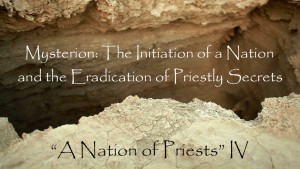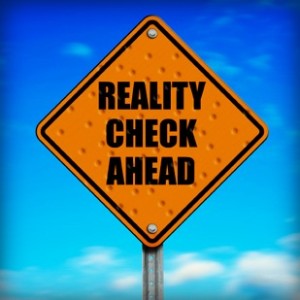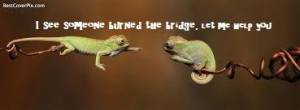Nation of Priests IV: The Initiation of a Nation
 So on Sunday I was preparing for Context for Kids Episode #19, Terumah, when I saw something in the text that I hadn’t seen before. Of course, that’s how it goes when you study Ancient Near Eastern context. A bit of random context will pop into your mind in an unexpected place. It changed what I decided to teach, and then a sinus infection popped up and now I am trying to get rid of my sniffles so that I can record without grossing everyone out.
So on Sunday I was preparing for Context for Kids Episode #19, Terumah, when I saw something in the text that I hadn’t seen before. Of course, that’s how it goes when you study Ancient Near Eastern context. A bit of random context will pop into your mind in an unexpected place. It changed what I decided to teach, and then a sinus infection popped up and now I am trying to get rid of my sniffles so that I can record without grossing everyone out.
Greco-Roman times saw the rise in popularity (but not the origins) of what were called “mystery” religions, Mithraism being the most famous, but there were many other non-exclusive voluntary mystery associations in the ancient world (meaning they didn’t compete with each other, you could belong to none, one or many). They were, more than anything, simply clubs designed for the purpose of keeping this or that deity happy and the cosmos, therefore, functioning better. We get our word “mystery” from the Greek “mysterion” – not simply meaning something that we do not know, like the identity of the murderer in an Agatha Christie novel, but instead a divine secret or relationship that one is initiated into and therefore available only to initiates. We see it used twenty-seven times in the First Century Writings, as well as twenty-five times in the late date LXX (Septuagint) books – Daniel, Enoch, Sirach, and the other wisdom and apocryphal books that came to be within the 500 – 600 years before Messiah when Babylonian and Assyrian influences were at their peak and which were then translated into Greek in the few centuries before Messiah.
Lest you be wise in your own sight, I do not want you to be unaware of this mystery, brothers: a partial hardening has come upon Israel, until the fullness of the Gentiles has come in. And in this way all Israel will be saved, as it is written, (1)
Here we see Paul very clearly using mystery religion language – something that would have been very familiar to his audience, but then he does something interesting, he shares it with them as though they were all elite initiates. He is telling them something that is a mysterion, in an open letter, something that would probably never have occurred in an actual mysterion.
Of course, all Ancient Near Eastern religions were, to some extent, mysterious. Laymen simply did not know what went on within the cult of the major Temples. Priests were initiated into esoteric knowledge and a special relationship which was quite easy to keep a secret because so very few people were literate – as was the case in Egypt. In many ANE cultures (Mesopotamia and Syria in particular), even kings were illiterate (2) and therefore relied on the integrity of their priests and scribes (not to be confused with first century Jewish scribes). Kings didn’t necessarily need to read, evidently! They had people for that! They could write down their secrets and it didn’t even matter in those days because, first, they kept them within the Temples where no one else could get to them and second, almost no one could read. Fortunately, in the ANE, they often recorded them on baked tablets which have been uncovered and have given us volumes of information within the last 100 to 150 years – completely changing what we thought we knew and relegating much “common knowledge” to the status of urban legends. It’s an exciting time to be alive and studying such things.
So what made the Hebrew religion different? Why did I write this under the heading of “A Nation of Priests?” Very simply put, initiates to a mystery religion were privy to knowledge that normal people couldn’t and didn’t know. Not only does one, in a mystery cult, have to be initiated into the mystery, but they often have to be initiated into greater mysteries at higher levels. Mormonism and Masonry are two excellent examples of modern mysterion. They won’t tell outsiders much of anything, and the knowledge that the higher ups have is not the same as what they are teaching newcomers.
Judaism, on the other hand, as well as Christianity, are decidedly not mysterion religions. Well, of course there are some aberrant cults under the umbrella of Judeo-Christian religion but in general you can learn everything you want about them from the outside. There are no mysterion, no divine secrets for initiates. In Romans 11, Paul is speaking in metaphoric language – comparing the believers to mysterion insiders because as we see in the Torah – God had Moses spell out the details of what would be going on within the Tabernacle to everyone. Unlike every other religion on earth at that time, the knowledge of the workings of the Temple were not reserved for the literal priests – in that way, everyone in the nation was treated as though they were priests and privy to what would be esoteric knowledge in other cultures.
Do you see now why it was a commandment for Torah to be read, out loud, once every seven years to everyone? NO SECRETS.
The Israelites knew that God wasn’t actually eating the sacrifice or the shewbread as pagan gods were thought to do – because He told them exactly what was happening. They knew there was no idol in the Holy of Holies because He told them so. They knew there were no secret incantations because they were told what the priests were in there doing – and the priests did the majority of their work in full view of the people. The workings of the Tabernacle/Temple were not shrouded in mystery – God was treating the nation like priests in allowing them the knowledge of the inner workings of His Divine Palace, the Tabernacle.
Because of this, there are thousands of books about YHVH, His worship, His Tabernacle/Temple and His Word and we are left with almost nothing concrete about the Mithras cult. YHVH doesn’t play around with initiation into mysterion – you can know what you are getting into when you enter into covenant with Him. You don’t keep going up in levels and all of a sudden discover something horrible. This isn’t the induction into a frat house where they blindfold you and humiliate you – as they did in the Mithras cult.
“For other initiatory rites we depend primarily on the fresco scenes in the mithraeum at S. Maria Capua Vetere. These depict usually a triad of figures: the initiates, small, naked, humiliated; and two initiators, one behind and the other in front of the initiates, manipulating the instruments of initiations.” (3)
Through the Scriptures, we can know more information about YHVH than we could adequately explore in a lifetime. But in a mysterion like Mithraism, we are limited to external references by non-cult members to their worshiping in caves or rooms decorated to look like caves, we know that they had no bishops or centralized authority but were simply local groups, we know that Roman Mithras sprang full grown from a rock that served as his mother, we know he killed a bull, we know that he dressed like a Persian even though he had almost nothing else in common with the Persian Mithras, and we know that he ate said bull with Sol, the Sun God (despite the fact that he was also presumably Sol himself ) while sitting on the hide of the bull. (3) We know his festival was celebrated in October. (4) The problem is that, unlike the Bible, which spelled things out for the benefit of the layman, giving him a sort of honorary priestly status, we have no existing writings from any person who was a Mithraicist about Mithraism. Either they never survived or people took this mysterion thing pretty seriously – mysterion is for insiders, not outsiders! What we think we know, is just that, we think we know it. We can look at artwork and excavated Mithraeum (meeting places) and make educated assumptions. We can look at the very few inscriptions and see that this or that person was an initiate. This informational vacuum has resulted in a great many modern myths having sprung up.
What happened in the Mithras cave stayed in the Mithras cave.
What happened in the Temple, on the other hand, was completely above-board and knowable to anyone. God didn’t want there to be any mistaking His worship for any of the mysterion, He wanted it known exactly what was going on with no room for whisperings of secret rituals. He wanted people thousands of years later to still have access to that information.
This is a really quick article on some of the aspects of the Mithraic mysterion by Roger Beck, who is probably the world’s most balanced expert. Although I disagree with him in his assessment of the meaning of Judaic sacrifice as well as “Christian” baptism (which of course isn’t Christian at all but Jewish) his emphasis is on Roman studies and that is where he needs to be evaluated and considered an expert. He is very methodical. I encourage you to take a look at the other links I have provided below, the Mithraism article in particular is incredibly well documented and can give some direction on deeper study with some legitimate sources. Beck has also written a book about Mithraism – The Religion of the Mithras Cult in the Roman Empire: Mysteries of the Unconquered Sun. It is very scholarly, not an easy read but the articles I have provided below are very good. Mystery religions are a valuable study in showing us how different the God of Abraham, Isaac and Jacob is than the other gods in the Ancient Near East and First Century.
(1) The Holy Bible: English Standard Version. (2001). (Ro 11:25–26). Wheaton: Standard Bible Society.
(2) Amanda H Podany, Brotherhood of Kings: How International Relations Shaped the Ancient Near East, p 71
(3) Roger Beck, Mithraism
(4) Stephen Hijmans, Usener’s Christmas: A Contribution to the Modern Construct of Late Antique Solar Syncretism

